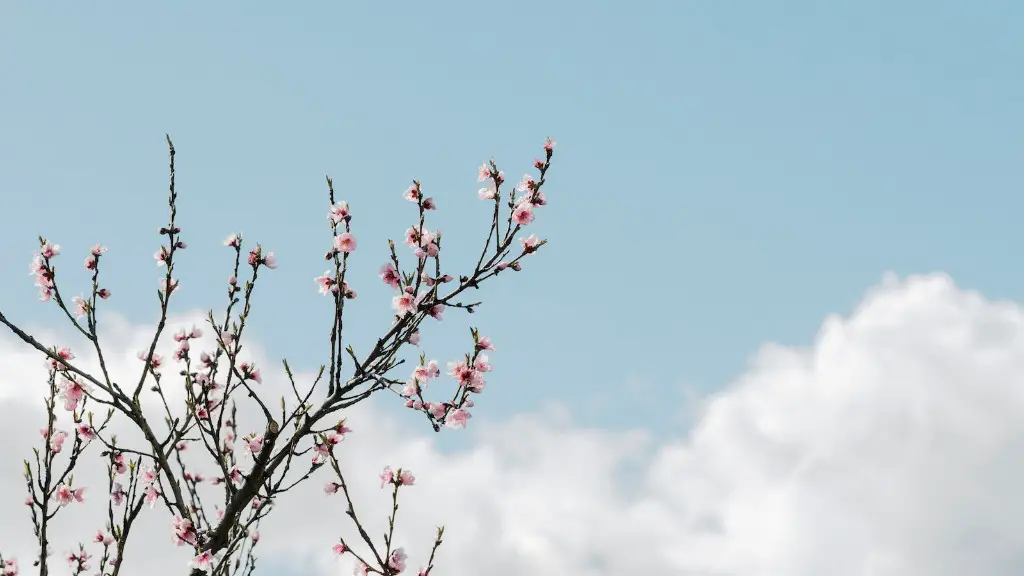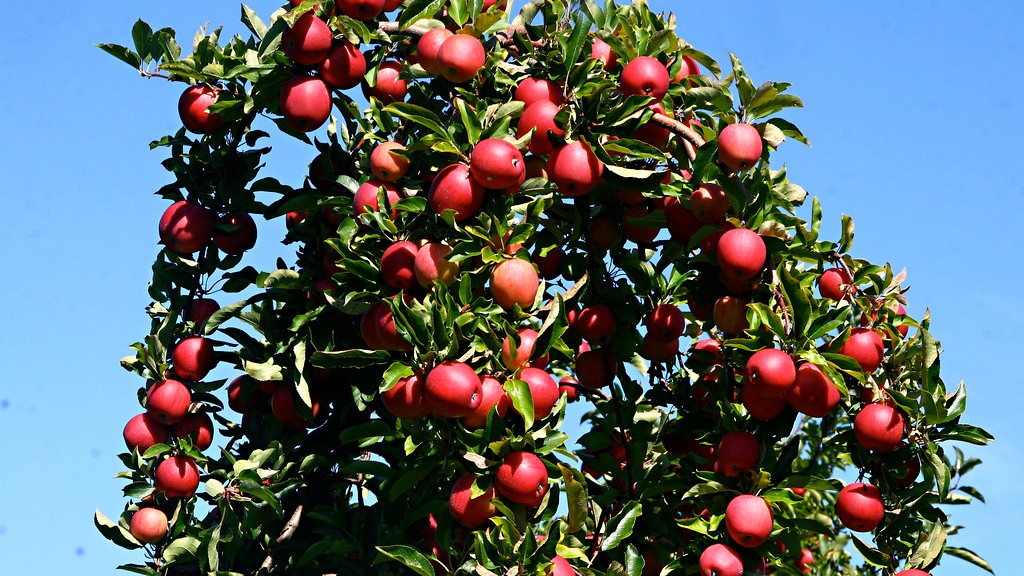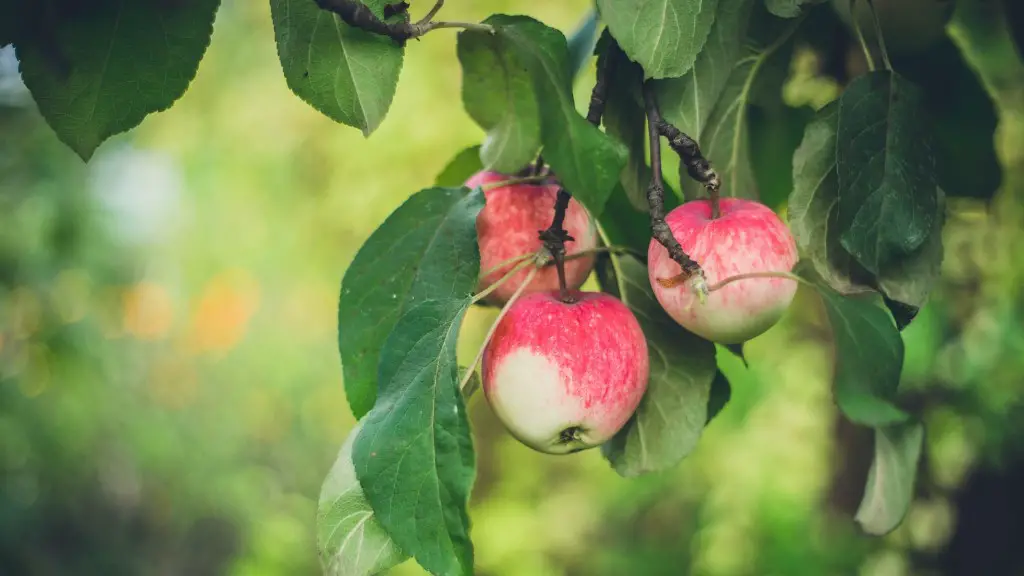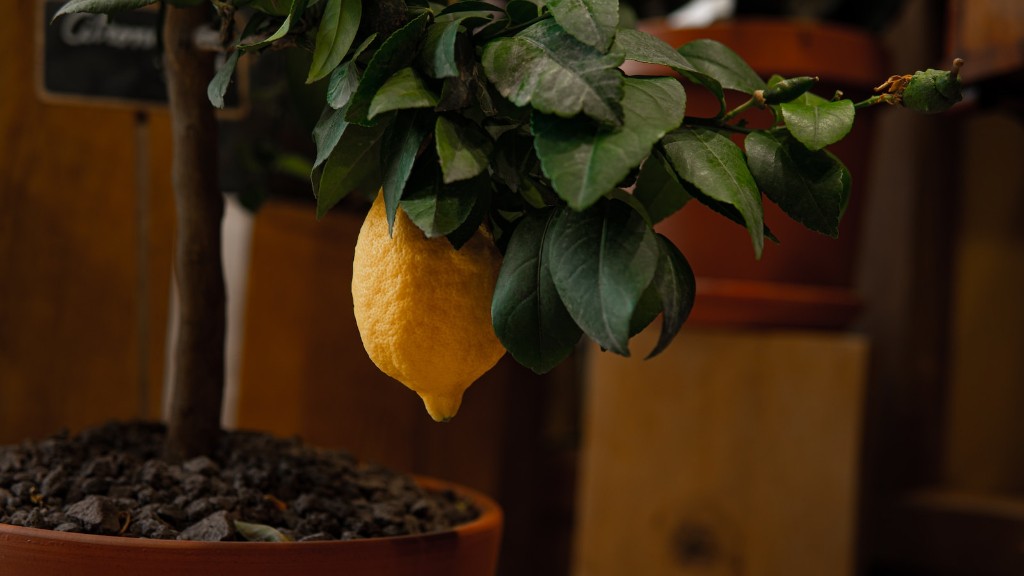The idea of planting cherry pits for a tree with edible fruit is truly tempting. While the idea has circulated for many years, it is important to acknowledge that anyone hoping to get a cherry tree by planting a cherry pit must be a patient gardener. Generally speaking, cherry pits will take at least a year to germinate and begin to produce a tree that can mature and produce cherry fruits. While the wait is long, with the right conditions and a little luck, planting a cherry pit can quickly pay off.
In order to have the best chance of growing fruit from a planted cherry pit, it is essential that the pit itself be viable. If a cherry pit has started to rot or otherwise show signs of spoil, then it will likely not be able to be planted and germinate, even if given the best possible conditions. Additionally, the climate in which the pit is planted can play a vital role in determining whether or not the tree will be able to thrive. Cherry trees require temperatures cool enough that their buds won’t be damaged by frost, and cherry trees typically grow best in climates with mild temperatures. This means that in some locations, the viability of cherries will be decreased dramatically.
In order for the cherry pit to germinate and grow into a healthy tree which can eventually produce edible fruits, it will likely require a larger amount of water than required by cherry trees which aren’t grown from pits. It is therefore essential that the environment in which the cherry pit is planted is sufficiently moist. The soil should also have a neutral pH level and have good drainage. Cherry pits are most successful when planted in a location which receives full sunlight exposure, however, there are certain varieties of cherries which can tolerate partial shade.
For cherry pits to succeed, they require time, attention, and care. Unlike other fruit seeds, a cherry pit requires cold stratification which requires storing the cherries at a very low temperature. This means that first, the cherry pits should be refrigerated for at least six weeks, before being planted. Once cold stratification is complete, the cherry pits can be tested for viability, and then planted when the season is just right. Planting the cherry pits very deep in the ground will also give them their best chance for success.
It is also important to note that the sprouting tree from a planted cherry pit will not be identical to trees typically propagated from cuttings. When planted from a pit, the tree that germinates may produce a different type of fruit than the parent tree. With cuttings, however, a clone of the parent tree can be grown, which will produce fruit of the same type as the parent tree. For those looking for an exact replica of the parent tree its best to look into propagating through a cutting.
In general, a cherry pit planted the right way in ideal conditions has an excellent chance of growing into a beautiful tree with yummy fruits. Usually, it takes a minimum of three to four years for the tree to bear fruit after the seeds are planted, although some varieties may require more time. So if you are looking for a unique fun adventure and don’t mind waiting, planting cherry pits is definitely worth a try!
Troubleshooting Common Problems for Cherry Pits
Though cherry pits are relatively easy to plant, there are a few pitfalls and problems that one can run into. Such as the cold stratification process, soil and pH level, pests and diseases, pruning, and climate considerations- all of which can impede the growth process. It is important to learn the basics of these topics to ensure successful growth of your cherry pit.
Cold stratification can be a tricky process. Many plants require cold stratification; cherry pits in particular need to be submerged in water for a period of 6 weeks, in order for the process to be efficient. It is important to remember that during this period, the cherry pits need to be monitored regularly to ensure proper progress is made. To guarantee success, the water should be changed every 7 days.
The soil and pH level of the planting site is also important for successful growth. An ideal pH level for growing cherry pits is 6.5. If the pH level is lower or higher than this level, it is likely that the pits will not germinate. It is important to adjust the pH level of the soil to the right amount. Furthermore, good drainage and a consistent supply of water to the soil is essential for germination. Too much or too little water can cause the pit to not grow.
Additionally, pests and diseases can also be a common problem in planting cherry pits. In order to prevent the pits from being invaded, it is essential that you cover the pit once planted with a plastic cover or some other type of protective coating. This will aid in preventing pests and diseases such as rot infestations.
Pruning is also a key factor when growing cherry pits, as it will allow for budding and fruiting to occur, as well as keep the tree from becoming too large and unmanageable. By pruning the tree, you can also remove dead or dying branches and promote better growth for the healthy parts. It is important to remember that all pruning should be done in late winter or early spring, when the tree is less likely to be damaged.
Finally, climate should also be taken into consideration when planting cherry pits. As this type of tree is known to be a bit finicky when it comes to climate, it is important to do thorough research into what climate would be best suited for the species of cherry you are planting. The temperature requirements as well as precipitation and other environmental conditions should all be considered to receive the optimum amount of growth.
Harvesting Cherry Pits
After following the above steps, it’s time to reap the rewards of your hard work and patience by harvesting the cherries. It’s important to again note the specific climate conditions required for your variety of tree. In general, the harvest on established trees takes place spring through late summer or early fall, depending on the variety and weather conditions. Another key point when harvesting cherries is understanding when the fruit is at peak ripeness. Each species of cherries has a designated time when the cherries are sweetest, most flavorful, and at their fullest size. Check in with a research facility if this is hard to determine.
Harvesting can be done in a number of ways, depending on the size of the tree. If the tree is smaller, the cherries can be harvested by hand, taking caution of course not to drop them on the ground. For trees that are too tall, a pole harvesting bucket can be used, which helps by providing extra reach to get the cherries juicy. If a tree is too unreachable, then cherry picking can be done with the help of a tall ladder or even a cherry picker machine- an engineered tool that is common in cherry orchards.
Finally, once all the cherries have been picked, the cherries need to be adequately stored. Cherries are a fragile fruit and must be kept in a cool and dry area to avoid any damages. Cherries can also be preserved and stored in many different ways such as freezing, canning, and drying.
Cherry Pit Planting Cost Considerations
When planting cherry pits, there are various costs involved, such as purchasing the pits, tools and equipment, soil preparation, and labor. First, the pits themselves must be purchased, and great care should be taken when buying them online or in-store to make sure they are viable and disease-free. Next, any tools and supplies that may be needed for planting, such as shovels, gloves, trowels, etc., should also be considered. Furthermore, soil preparation and purchasing compost or fertilizer may be necessary as well.
Finally, there is also the factor of labor. Depending on the size of the area to be planted, which pits to be planted, and the amount of time one personally has to do the work, cultivation costs may vary and additional labor will need to be hired. This can also be the case for subsequent stages such as pruning and harvesting. It is important to consider both present and future costs to ensure that planting cherry pits is a feasible task.
Maintenance and Care of Cherry Pits
Once the cherry pits have been planted, a lot of maintenance and care is required in order to ensure their success. The trees will need a certain amount of water and sunlight to survive. The amount of water needed depends on the species of cherry, so it is important to consult a research laboratory for more information. A cherry tree should preferably receive at least 8 hours of full sun exposure every day, however, some varieties can also do just fine with partial shade.
In addition, regular pruning of the trees should be done in order to promote flowering and fruiting. Unfortunately, cherry trees can be prone to diseases such as bacterial canker, brown rot, and gummosis if not suitably maintained. Therefore, if any of these signs are spotted, it is important to take action as soon as possible. There are various methods for controlling such diseases, one of which is applying copper fungicides to the effected area.
Another important aspect of maintenance is fertilizing the soil. Depending on the needs of the tree, fertilizers that are high in nitrogen, potassium, and phosphorus should be applied as needed. Pesticides might also be necessary in order to keep away any unwanted pests. All such care must be done with precision and with the advice of a research facility.
The Rewards of Growing Cherry Pits
Growing cherry pits is a rewarding and fulfilling experience- one that requires dedication, patience, and attentiveness. From the sprouting of the pit, to the blooming of the cherry tree, to eventually plucking that sweet and juicy fruit off the tree- this process is sure to be exciting, fulfilling, and scrumptious!
Cherry fruits are an amazing source of nutrition and have many health benefits. They are great for digestion, are full of antioxidants, and are packed with vitamins and minerals. Not only that, but freshly picked fruits taste far better than store bought ones! This makes harvesting the cherries from pits a worthwhile experience.
Planting cherry pits can therefore serve as both a fun way of getting into gardening, and a great way of gaining access to natural snacks. With a little luck and lots of hard-work, growing cherry pits can quickly become a delicious hobby that one can enjoy for years to come.




